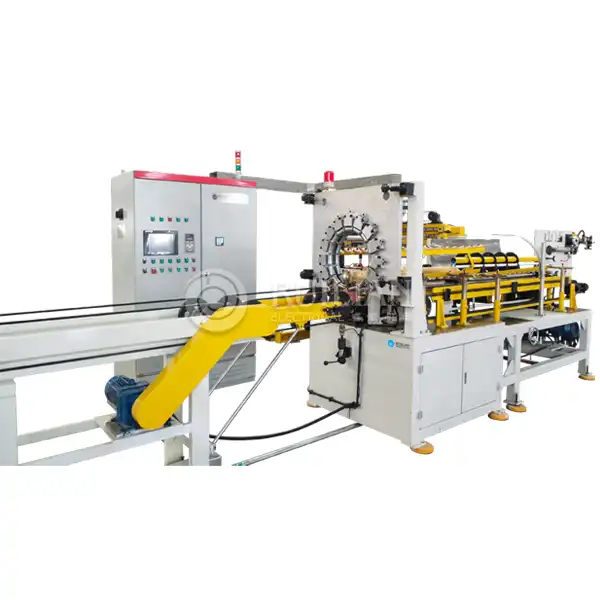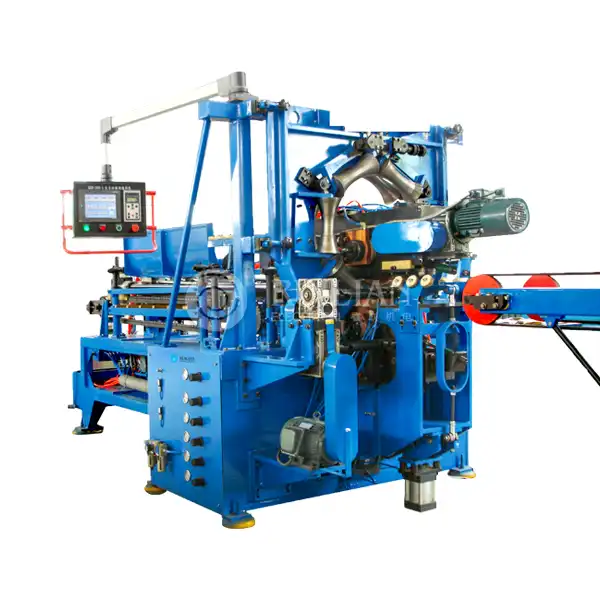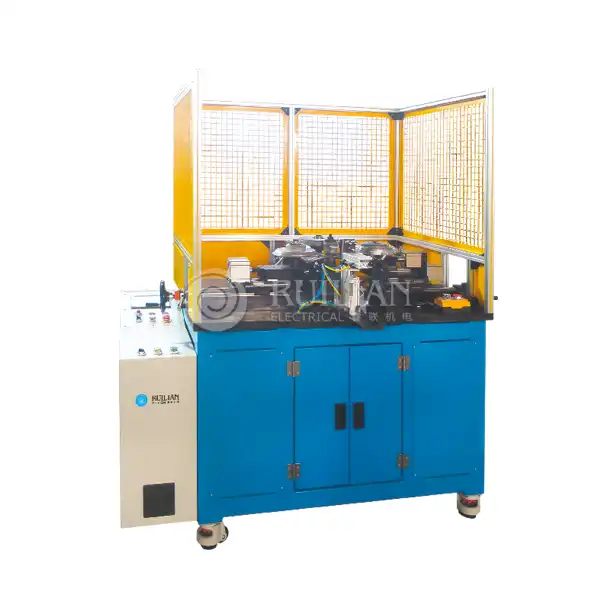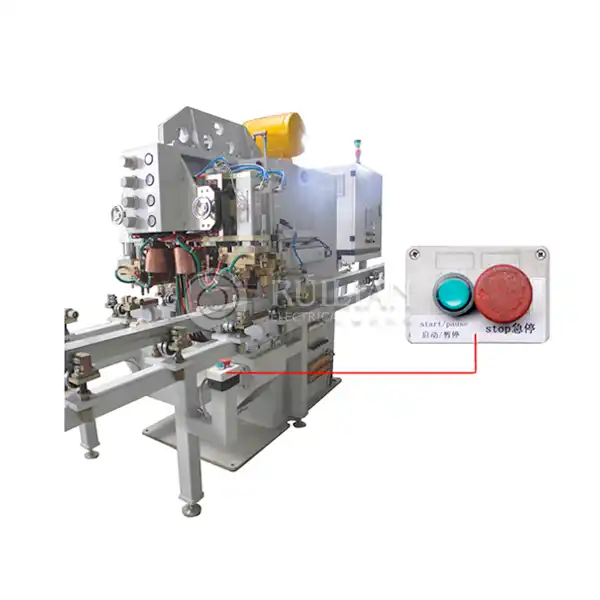How long does a welding machine last?
When investing in welding equipment, one of the most common questions that arise is, "How long does a welding machine last?" The lifespan of a welding machine can vary significantly depending on various factors, including the type of machine, usage patterns, and maintenance practices. In this comprehensive guide, we'll explore the longevity of welding machines, with a special focus on the Resistance Arc Seam Welding Machine, and provide insights on how to maximize the lifespan of your welding equipment.
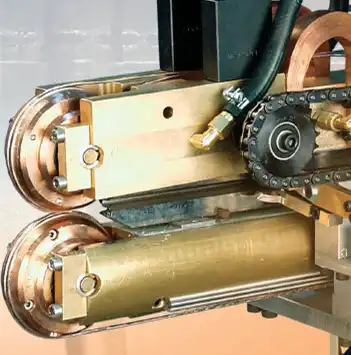
Factors Affecting the Lifespan of Welding Machines
The durability of welding machines is influenced by several key factors:
- Quality of Construction: High-quality welding machines, such as those manufactured by reputable brands, are built to withstand the rigors of frequent use and harsh environments. These machines often feature robust components and superior engineering, contributing to a longer lifespan. Machines built with premium materials are better equipped to withstand harsh working conditions, including exposure to extreme temperatures, humidity, and dust. This resilience ensures that they continue to perform effectively over time, minimizing the need for repairs and replacements.
- Frequency of Use: The more a welding machine is used, the faster it may wear out. However, regular use can also help maintain the machine's components in good working order, preventing issues that can arise from prolonged inactivity.
- Environmental Conditions: Welding machines exposed to extreme temperatures, humidity, or corrosive environments may experience accelerated wear and tear. Proper storage and protection can mitigate these effects.
- Maintenance Practices: Regular maintenance, including cleaning, inspection, and timely repairs, can significantly extend the life of a welding machine. Routine checks and servicing can identify potential issues before they escalate, allowing for timely interventions. Proper cleaning, lubrication, and calibration ensure that all components function optimally. Following the manufacturer's maintenance schedule is crucial for preserving machine integrity, as neglecting these practices can lead to avoidable breakdowns and reduced efficiency.
- Type of Welding Process: Different welding processes put varying levels of stress on the equipment. For example, a Resistance Arc Seam Welding Machine may have different wear patterns compared to a standard MIG welder due to its specialized function.
Longevity of Resistance Arc Seam Welding Machines
Resistance Arc Seam Welding Machines are specialized equipment designed for continuous welding of long seams. These machines are often used in industries such as automotive, aerospace, and manufacturing where high-precision, long-seam welds are required. The lifespan of a Resistance Arc Seam Welding Machine can be particularly impressive due to several factors:
- Robust Construction: These machines are built to handle high-volume production and are typically constructed with durability in mind. With proper care, a high-quality Resistance Arc Seam Welding Machine can last 15-20 years or more.
- Specialized Components: The unique components of these machines, such as the electrode wheels and power supply systems, are designed for longevity and consistent performance over extended periods.
- Advanced Control Systems: Many modern Resistance Arc Seam Welding Machines feature sophisticated control systems that help optimize welding parameters, reducing stress on the machine and extending its operational life.
- Ease of Maintenance: Despite their complexity, these machines are often designed with maintenance in mind, allowing for easy access to critical components and simplified servicing procedures.
While the initial investment in a Resistance Arc Seam Welding Machine may be higher than that of more common welding equipment, the long-term value proposition is compelling due to their extended lifespan and specialized capabilities.
Maximizing the Lifespan of Your Welding Machine
To ensure your welding machine, whether it's a Resistance Arc Seam Welding Machine or another type, reaches its maximum potential lifespan, consider implementing these best practices:
- Adhere to Manufacturer Guidelines: Follow the manufacturer's recommendations for operation, maintenance, and servicing. This includes using the correct consumables and adhering to duty cycle specifications.
- Implement a Regular Maintenance Schedule: Develop and stick to a maintenance routine that includes cleaning, inspection, and periodic servicing. This proactive approach can prevent minor issues from escalating into major problems.
- Provide Proper Training: Ensure that all operators are thoroughly trained in the correct use of the welding machine. Improper operation can lead to unnecessary wear and potential damage.
- Invest in Quality Consumables: Using high-quality consumables, such as electrodes and wire, can reduce stress on the machine and improve overall performance.
- Monitor Environmental Conditions: If possible, operate and store the welding machine in a controlled environment. Protect it from extreme temperatures, moisture, and dust when not in use.
- Perform Regular Calibrations: For machines like the China welding machine, regular calibration of welding parameters ensures optimal performance and reduces unnecessary strain on components.
- Address Issues Promptly: Don't ignore minor problems or unusual noises. Addressing issues early can prevent more significant damage and extend the machine's lifespan.
- Consider Professional Servicing: For complex machines or critical components, consider having them serviced by professionals or the manufacturer's authorized technicians.
By implementing these strategies, you can significantly extend the life of your welding machine, ensuring it remains a valuable asset to your operations for many years to come.
Conclusion
In conclusion, the lifespan of a welding machine, particularly a specialized piece of equipment like a Resistance Arc Seam Welding Machine, can be quite substantial when properly maintained and operated. While the exact duration can vary, with proper care and attention, many welding machines can remain operational for 15-20 years or even longer. By understanding the factors that influence a welding machine's longevity and implementing best practices for maintenance and operation, you can maximize your investment and ensure reliable performance throughout the machine's lifecycle.
If you're looking for high-quality welding solutions, including Resistance Arc Seam Welding Machines and other specialized welding equipment, RUILIAN offers a wide range of application solutions. Our expertise spans various industries, including ventilation engineering, home appliance manufacturing, aerospace, and marine vessels. Our advantage is a leading air duct welding manufacturing company related to air duct manufacturing in the HVAC industry. To learn more about our products and how we can support your welding needs, please contact us at ry@china-ruilian.cn and view our company website: www.rlseamwelding.com.
References
1. American Welding Society. (2021). Welding Handbook, 10th Edition.
2. Lincoln Electric. (2022). The Operation and Maintenance of Arc Welding Equipment.
3. Miller Electric Mfg. LLC. (2023). Welding Equipment Maintenance Guide.
4. Resistance Welding Manufacturing Alliance. (2022). Resistance Welding Manual, 5th Edition.
5. Welding Technology Institute of Australia. (2021). Technical Note 7: Care and Maintenance of Welding Equipment.


